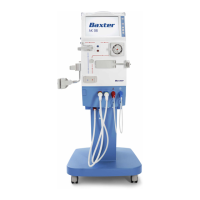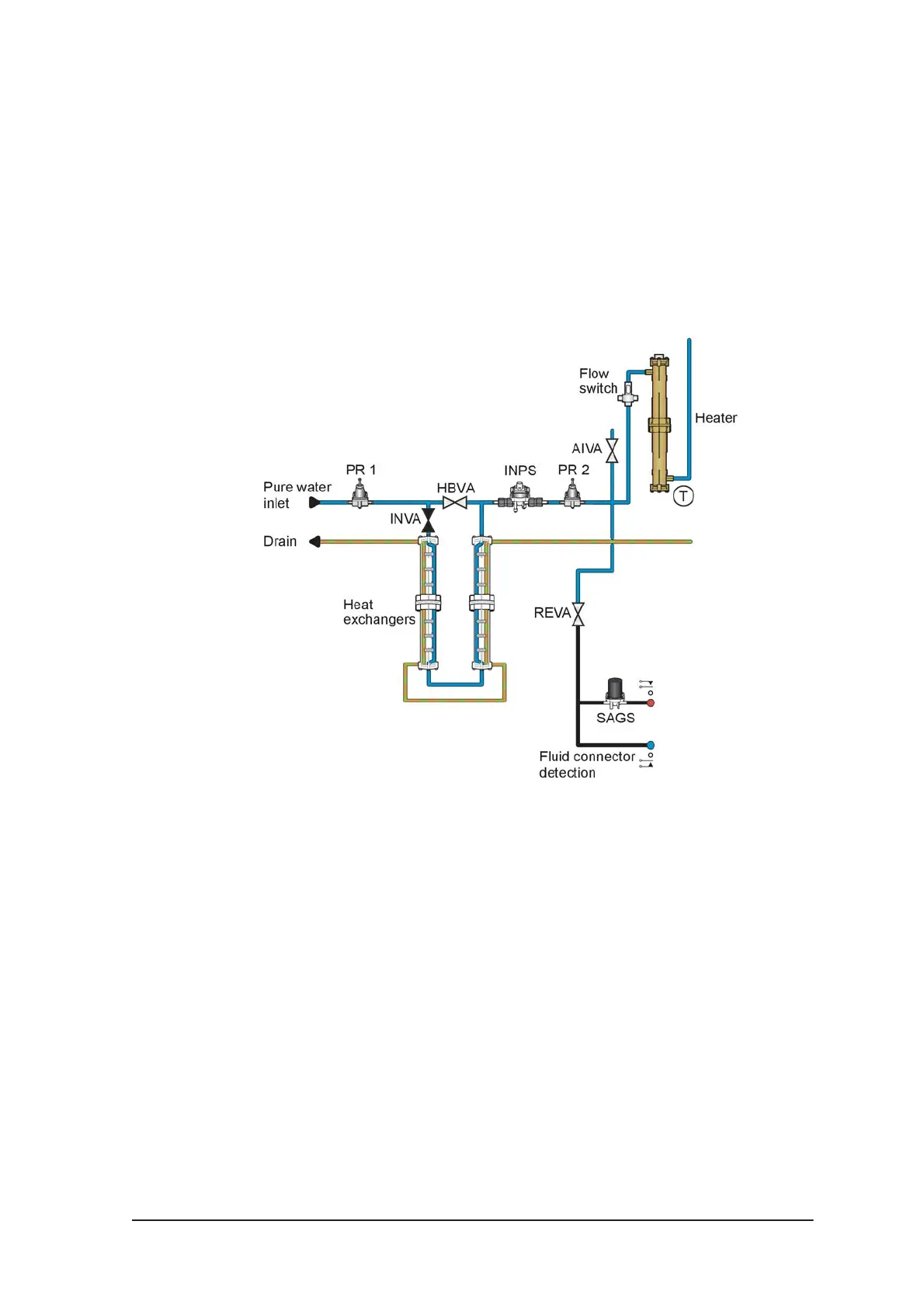HCEN12630 Revision 07.2015
Program version 1.xx
AK 98™ Dialysis Machine - Technical description 67
3.3.3 Fluid unit – flow path description
3.3.3.1 The water intake and heating system
Before entering the machine, the water passes a pressure regulator (PR1), which
lowers the water supply pressure to 0.8 Bar (600mmHg). The heat exchanger bypass
valve (HBVA) is closed at this time.
A heat exchanger using the outgoing water raises the incoming water temperature
several degrees to ensure that machines at clinics with very cold water can still reach
the correct heat disinfection temperature.
Figure 3-10. See chapter 11: "Fluid unit - flow path".
In the machine, the water passes a second pressure regulator which lowers the
pressure to about +130 mmHg – and INVA – Inlet Valve. The inlet pressure is
monitored with a pressostate – INPS – which alarms if pressure drops below 99 ± 20
mmHg and the alarm is disabled when the pressure reaches above 150 ± 20 mmHg
again.
AIVA – Air Inlet Valve – facilitates draining of the fluid system (it opens during drain
phase). REVA – Recirculation Valve – is used during disinfection and rinsing (water is
circulating).
HBVA – Heat exchanger Bypass Valve is used to help cool down the AK 98 dialysis
machine faster after a heat disinfection program.
Water is heated as it passes through the heating element in the heater. The flow switch
in the inlet is used for overheat protection (no flow = heater off). The transducer
“Regulator Temperature” at the heater’s outlet is one of the two transducers used for
temperature control – the other is placed in conductivity cell B.
The heating element is controlled through a solid state relay, which is driven by a
TTL-level duty cycle signal (which can be monitored as a value from 0 to 100%).

